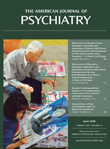Psychological Responses to Continuous Terror: A Study of Two Communities in Israel
Abstract
Objective: The authors evaluated psychological responses to continuous terror. Method: Data were collected after 10 months of escalating hostilities against civilians in Israel. The study’s participants were randomly selected adults living in two suburbs of Jerusalem, one frequently and directly exposed to acts of terrorism (N=167) and the other indirectly exposed (N=89). Participants provided information about exposure to terror-related incidents, disruption of daily living, symptoms of posttraumatic stress disorder (PTSD), and general distress (assessed with the Brief Symptom Inventory). Results: Residents of the directly exposed community reported more frequent exposure to terror and deeper disruption of daily living. Notwithstanding, the directly and indirectly exposed groups reported comparable rates of PTSD and similar levels of symptoms: 26.95% of the directly exposed group and 21.35% of the indirectly exposed group met DSM-IV PTSD symptom criteria (criteria B through D), and about one-third of those with PTSD symptoms (35.7% in the directly exposed group and 31.5% in the indirectly exposed group) reported significant distress and dysfunction. Subjects who did not meet PTSD symptom criteria had very low levels of PTSD symptoms, and their Brief Symptom Inventory scores were within population norms. Exposure and disruption of daily living contributed to PTSD symptoms in the directly exposed group. Disruption of daily routines contributed to Brief Symptom Inventory scores in both groups. Conclusions: Continuous terror created similar distress in proximal and remote communities. Exposure to discrete events was not a necessary mediator of terror threat. A subgroup of those exposed developed serious symptoms, whereas others were surprisingly resilient. Disruption of daily routines was a major secondary stressor.



